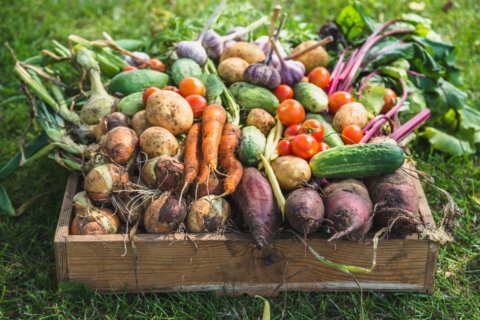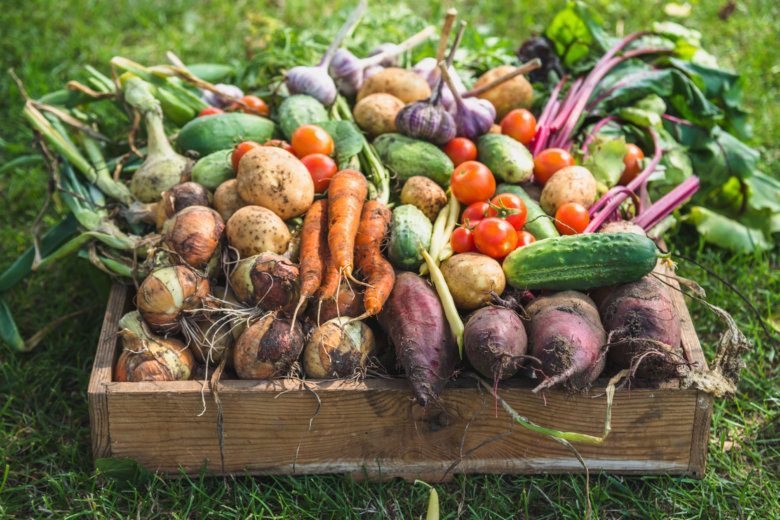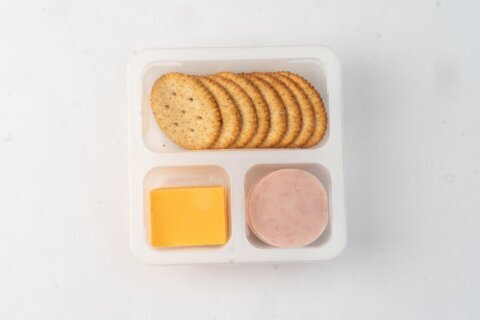
Although the current plant-based buzz seems trendy, foods derived from plants have been appearing in our diets for centuries. But these days, with highly processed foods filling our supermarket shelves, it’s important to note that not all plant-based foods are alike.
In my book ” Read It Before You Eat It: Taking You from Label to Table,” I guide consumers through the thousands of confusing and overwhelming food labels we face every time we shop. It would seem like the produce aisle would be easiest to navigate since most foods there don’t even wear food labels, but even choosing produce can leave us perplexed.
Yet, nothing shows off the best way to eat plants than the produce aisle. To me, the produce department is the crown jewel of the store, highlighting Mother Nature’s seasonal gifts in a color palette that can’t compare to any other section of the supermarket.
[SEE: 12 Ways to Eat Veggies for Breakfast.]
The Power of Plants
According to registered dietitian nutritionist Wendy Reinhardt Kapsak, president and CEO of the Produce for Better Health Foundation, “We now know that enjoying more fruit and vegetables is the single-most important thing we all can do to live happier, healthier lives.”
Plants are also found throughout the store in a variety of other forms too: frozen, canned and even dried. And they offer a wide variety of benefits, including nutrients Americans are under-consuming (like potassium and fiber). You would think that having a multitude of options to choose from would encourage us to pick plants at every meal. However, the most recent government data shows 81% of Americans aren’t getting enough fruits in their diet and 90% aren’t getting enough vegetables, according to the U.S. Department of Agriculture’s What We Eat in America study.
Is Fresh Better?
Whether fresh, frozen or canned, the nutritional benefits of produce will be received no matter how you buy them — as long as you eat them! And if buying them frozen, means you’re more likely to eat those green beans, then go for it! What’s key is being able to have produce at your fingertips for any meal or snack without having to run to the supermarket every time you want a fruit or veggie.
When it comes to picking produce, it’s often assumed fresh is best, but that’s not always the case. And besides, if we all need to be eating more fruits and veggies, the form shouldn’t necessarily be the priority, especially since the type may not make much of a difference when it comes to nutrient quality.
Surveys have shown that when it comes to the main drivers for why we choose the foods we eat, taste rules, followed by convenience, health value and cost. (The last two are interchangeable.)
Keeping those demands in mind, there are times when fresh just may not work for you, depending upon storage at home, your budget, proximity to your store, your schedule and your taste preferences.
Produce for Better Health Foundation data demonstrates that consumers who have all forms of fruits and vegetables available in their homes also have the highest produce consumption overall. But since not all produce is alike, let’s take a closer look at the various ways you can pick produce to satisfy what your body needs and your taste buds crave.
From a nutritional standpoint, sometimes frozen is better because it’s picked at its peak of ripeness, and some valuable nutrients (like the lycopene in canned tomatoes) are even better absorbed in their canned/cooked version than the fresh types. Most importantly, buy what you will enjoy, what you have space for and what you can afford.
[See: How 16 Fruits Boost Your Health.]
Make Half Your Plate Plants
Here are just some of the reasons why produce, in any form, should take up at least half your plate at meals and snacks:
— Fiber: 95% of us don’t get enough fiber. Fruits and vegetables are naturally high in fiber.
— Low sodium: Produce that’s not highly processed is not only free of sodium, but it has also been shown to reduce blood pressure and risks of heart disease.
— No cholesterol: Any food that comes from a plant is naturally cholesterol-free.
— Nutrient dense: There’s no food group that provides a greater array of vitamins, minerals, antioxidants, phytochemicals and greater nutritional value than fruits and vegetables. The array of color displays their range of nutrients including vitamins A and C, iron, potassium, magnesium, selenium, lycopene and resveratrol. Although we’re often told to “eat a rainbow,” white is a color too. Potatoes, mushrooms and cauliflower all provide health benefits.
— Health links: Countless studies have linked a diet high in fruits and vegetables with a reduced incidence of various diseases, including cancer, heart disease, cataracts, hypertension, diabetes and arthritis.
[See: The 10 Best Diets for Healthy Eating.]
Pros and Cons of Different Forms of Produce
Fresh Produce, Pro:
— Comes in a variety of shapes, sizes, and colors.
— Nutrient-rich in their natural state without processing.
— No additives, preservatives, added sugar, sodium, fat.
— Promotes eating in season.
— An “as is” as a snack (not much prep, if any, needed).
— Easier to purchase locally grown produce, ensuring minimal transport time, perhaps better taste, higher quality and the benefit of supporting local farmers.
Fresh Produce, Con:
— Shorter shelf life than dried, frozen or canned.
— May have lower nutrient value depending on how long it’s been stored or how far it’s been shipped.
Canned Produce, Pro:
— Easy to store so you can stock up on supplies.
— May be less expensive than other forms.
— Long shelf life.
— Some canned foods offer greater health benefits (like lycopene in canned tomatoes).
— Fiber may be easier to digest than in fresh types.
Canned Produce, Con:
— May be packed with sugar, sodium.
— Some cans may contain bisphenol A (BPA). Studies have linked BPA to infertility, heart disease and diabetes. (Note: Many of today’s cans are BPA-free.)
— Texture will be softer than fresh.
— Color may not be the same as fresh.
— Need to watch out for dents or pockets of air in the cans, which can indicate harmful bacterial growth.
Frozen Produce, Pro:
— Frozen foods are picked and frozen at the peak of ripeness to enhance flavor and nutrient value.
— Easy to store so you can stock up.
— May be less expensive than other forms.
— Long shelf life.
Frozen Produce, Con:
— Some frozen foods are packed with additional salt, sugar, fat and sauces.
— Texture will not be a crisp or fresh.
Dried Produce, Pro:
— Portable without requiring refrigeration.
— May be rich in valuable nutrients (iron, fiber).
— Some have very concentrated taste.
— Some are very light-weight (freeze dried).
— Long shelf life.
Dried Produce, Con:
— Although concentrated in nutrients, can also be concentrated in calories.
— With fruits that are naturally tart, such as cranberries, sugar may be added.
— Sulfites are often added to dried fruit to preserve them, creating risks for those with sulfite allergies.
More from U.S. News
10 Healthy Fall Vegetables You Should Eat
Sweet Potato Nutrition Facts: 7 Ways This Root Veggie Is Good for You
Fresh, Frozen or Canned: What Produce Is Best? originally appeared on usnews.com








